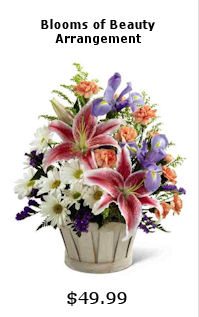Do ghosts exists? Nobody knows for sure. But what we do know is that Ghost Orchids do exist! They are rare in the world, but you can see, feel and smell them! In fact, the name Ghost Orchid actually refers to two different types of orchids: the dendrophylax lindenii and the epipogium aphyllum.
Ghost Orchid #1

Photo Credit: flickr.com
Scientific Name: Dendrophylax Lindenii
Other names: American Ghost Orchid, Palm Polly, white frog orchid
Unlike most flowers, this one does not have any leaves. This ghost orchid is ghostly white in colour and also appears to be floating in midair, hence the name. The fragrant flowers, which bloom between June and August, are borne on the spikes emerging from a mass of roots. In fact, this plant mainly consists of the green, flat, cord-like roots! The flower can also be identified by the two long tendrils that twist slightly downwards, resembling the back legs of a jumping frog.
Along with its exotic beauty, the orchid is also valued for its fragrance. The flower emits a scent resembling apples, especially early in the morning. The ghost orchid is native to moist and swampy forests of Florida, Cuba and other Caribbean islands. It is commonly found growing on the main trunk or branches of living trees.
Any gardener would love to have these flowers in their garden. Unfortunately, cultivation has been known to be extremely difficult and challenging. Transplanted ghost orchids will die within the year. Besides, the ghost orchid is considered rare and endangered in the wild. Removal of the plant is illegal; it is protected by law in the state of Florida.
The giant sphinx moth pollinates this orchid.
Ghost Orchid #2
Scientific Name: Epipogium aphyllum
This Ghost Orchid is definitely mysterious and lives up to its ghostly name. For one, this plant doesn’t contain any chlorophyll. The plant produces one to four flowers that are ghostly pale and waxy in appearance with purple spots. The stem is slightly pink and translucent with reddish streaks. And like the other ghost orchid, this one also doesn’t have any leaves. The “leaves” are tiny scales at the base of the plant and higher up.
And just like the other ghost orchid, the Epipogium aphyllum doesn’t use the sun’s energy for growth and development. It also feeds off its host, usually the fungi attached at the base of the tree. These flowers are typically found in beech, oak, pine and spruce forests. However, unlike the Dendrophylax Lindenii, the Epipogium aphyllum does not have any roots. The plant grows from an underground rhizome and only emerges above ground to flower.
Sightings are rare. This ghost orchid spends most of its life underground and often pulls disappearing acts. It will disappear and suddenly reappear expectantly in an area. Consequently, the plant is classified as a critically endangered species and is protected under law in many places.
If you are lucky enough, you may be able to see these rare plants bloom in the spring and summer. Some have reported sightings in places with cold winters including Japan, Russian, the United Kingdom, and France. The attractive flowers have a delicate and sweet scent, that some say resembles bananas.
The plant is pollinated by bumblebees and other insects, but seed is rarely produced.
Related articles
- Weird & Wild: Spider, Butterfly Orchids on Behind-the-Scenes Tour (newswatch.nationalgeographic.com)
- Orchid named after Will and Kate (funflowerfacts.com)
- Orchid Photo Week: Rosy (boredmaiden.wordpress.com)





















Pingback: Weird & Unusual: Bladderwort Plants (Utricularia) | The Blog Farm
Pingback: Fun Flower Facts: Vanda Orchid | Grower Direct Fresh Cut Flowers Presents…
Pingback: Fun Flower Facts: Dendrobium Orchid | Grower Direct Fresh Cut Flowers Presents…
Pingback: The Orchid that Looks like a Bee! | Grower Direct Fresh Cut Flowers Presents…
Very interesting! I’ve never heard of Ghost Orchids.
LikeLike
And now you have! 🙂
LikeLike